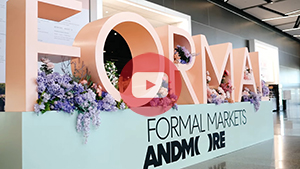Fashion District Gets High Grades
Economic activity is up and crime is down in the Los Angeles Fashion District, according to the Los Angeles Fashion District Business Improvement District’s (BID) recently released annual report, which reported mostly high marks for the management of the 90-square-block area.
Fashion District business owners finance the organization and make up its board of directors. The group reported improvements in crime prevention, economic vitality and cleanup programs for its 2004 fiscal year. With the continued boom in commercial construction, economic growth is on a strong uptick. Most of the growth is coming from residential development, as well as from wholesale and retail businesses.
Urban renewal projects throughout downtown are attracting new residents. A strong juniors trade and spikes in consumer traffic, which is up 23 percent, are driving commercial construction.
A number of projects are on tap this year. Los Angeles real estate firm MJW Investments plans to renovate another building within its Santee Court mixed-use village to provide the first residential for-sale property in the district, with 64 units on tap. A neighborhood grocery store opened this month, and a Rite Aid store opened earlier this year at Santee Court.
“We’re seeing more evening uses because of the new residential base. Angelique’s restaurant is staying open for dinners for certain occasions, and the new Tiara Cafe [scheduled to open at The New Mart this summer] is expected to be open for dinners,” Smith said.
Wholesale and retail properties continue to propel activity along the Crocker Street, San Pedro Street and Santee Alley corridors. The BID last year annexed an eight-block section along Crocker Street to accommodate new growth, mostly from wholesale businesses. Later this year, a new retail center is scheduled to open at Maple and Pico that is expected to support Santee Alley businesses. Several wholesale buildings are under construction on Los Angeles Street. The BID showed support for smaller, entrepreneurial businesses in the district by endorsing a controversial big-box ordinance, which bans super stores larger than 100,000 square feet.
In terms of operations, crime was down 20 percent because of improved response times from the BID’s roving security team and enhanced relations with the Los Angeles Police Department.
Other factors also contributed, said the BID’s executive director, Kent Smith. “There are more people on the streets now because of the residential, retail and wholesale development. So there are a lot more witnesses, and that deters crime,” he said.
Most of the crime in the area—which includes illegal vending, auto burglaries and theft—falls into the nonviolent category. New programs such as a video surveillance project are aimed at cracking down on ongoing illegal activities such as sales of counterfeit goods.
Last year, about $37 million in counterfeit goods were seized in Los Angeles, mostly from the Fashion District. The merchandise included apparel and bootleg DVDs.
As part of the surveillance project, digital video cameras are placed in strategic locations throughout the district and are monitored by the LAPD’s Central Division 24 hours a day. Two cameras are in place, and four more will be added by the end of the month, Smith said. The BID also won approval from the city’s police commission to hire off-duty police officers for events and special situations. —Robert McAllister





















